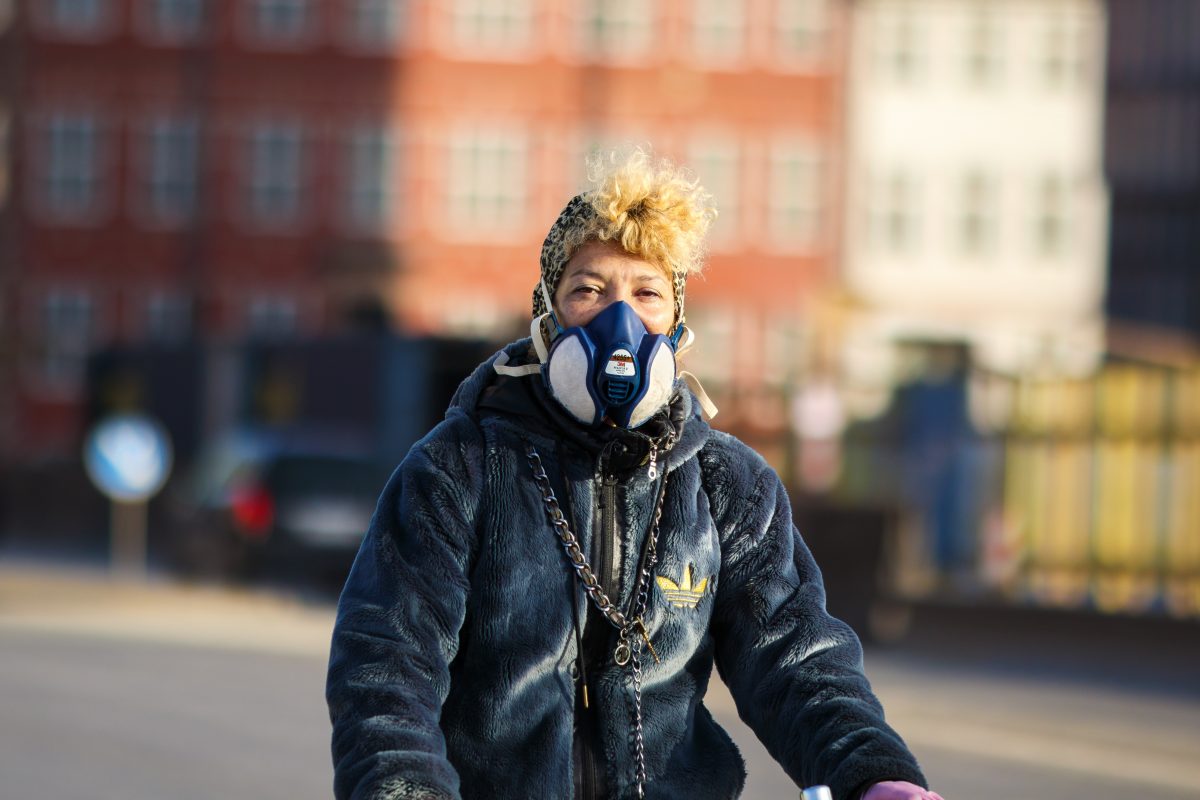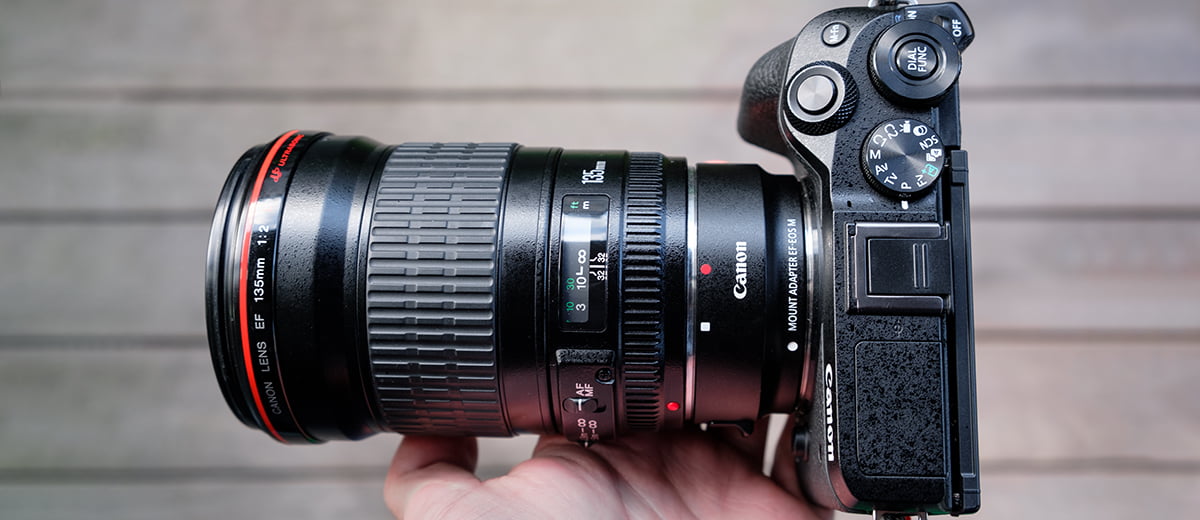I’ve always been fascinated by long Canon or Nikon DSLR tele prime lenses but never liked the long size and heavy weight. I tried many options to get around it, to get a smaller more portable tele prime setup, but so far no luck. Here are some of the options I covered so far:
The perfect small tele prime setup
- Canon DSLR with Canon EF 300mm f2.8: the classic setup, probably the best professional option but personally I don’t enjoy carrying too big equipment and I don’t like DSLR’s.
- Sony A7/A9 camera with a fast tele lens. I tried the Sony 70-200mm f2.8 but it’s a bit too much for me and the Sony 400mm f2.8 is insanely expensive. The Sony have the highest technology level I tried but I don’t really enjoy using the cameras and don’t like the “color science”.
- Sony A7/A9 camera with Minolta AF 200mm f2.8 using a-mount adapter, check my review here. Not a viable option, too slow and unreliable.
- Fujifilm X camera with the Finger adapter and Canon EF lenses like the Canon EF 135mm f2, check my review of the setup here. Auto focus is not great, somehow images doesn’t look good, not an option.
- Fujifilm X camera with Fujifilm XF 200mm f2: big and expensive, but maybe the next setup to try?
- Canon mirrorless EOS R with adapted 200mm f2.8, 200mm f2.0, 300mm f2.8. A pretty big setup still and not cheap.
So my new idea was to get a small Canon M6 camera and put on the Canon EF 135mm f2 L USM using the Canon EF-M to EF adapter. I got the original Canon version of the adapter (there are also 3rd party versions) and got the camera and lens used, 350 euro for camera and 520 euro for the lens (pretty cheap I think). I also got a few native EF-M mount lenses to test out.

Canon EOS M6
I know it’s an older camera and there is a new Mark II version now. But I wanted to try this one out first to see if it had what I needed.
Pros:
- First of all it’s very cheap used.
- I love the colors of this camera. It’s the classic Canon colors we all know and love. Maybe it’s a little to boring, but I still think it’s great.
Cons:
- It’s slow to use, refresh rate on the screen and auto focus means this camera is not good for fast moving subjects.
- Video is terrible, don’t even bother. I even installed CineStill video profile in hope of getting more out of it but nope.
- I though the M50 and M6 was almost identical but the M6 seem to have a weaker processor and run the same low end firmware as PowerShot cameras. Probaby the reason for my big disappoint.
- The ergonomics and quality of the camera feels cheap. Not something that will inspire you to go out and take photos.
- Image quality a little soft.
I got some photos I really love with this camera, but all in all this camera still lacks something, especially the slow auto focus. I decided to sell it and buy the newer version, the Canon EOS M6 Mark II.
2023 Update: I bought back the Canon EOS M6. From all the Canon cameras I used this one is the one I enjoy the most.
Sidenote: If you where considering getting the Canon EOS 80D, that camera has the same sensor as the Canon EOS M6. I did a side to side test of those two, and the images looks identical. The M6 has a newer processor, but still seems limited by Canon i.e. by it’s video features, but for photos I would prefer the M6 over the 80D because of it’s small size.

Canon colors
There is just something about the colors that comes out of Canon cameras. You can ask people like Tony Northrup, he will try to make a scientific test to show that there is no difference. But in my opinion, the photos I take, when I look at them full screen uncompressed on my 1440p monitor, the difference is so big between camera manufacturers. And I can’t recreate the different looks from other cameras. I.e. when I shoot Sony I never see the color brown, I see red, orange or grey. But with Fujifilm and Canon I do.
If you apply a heavy color grading to all your photos or if you only use photos for social media then it won’t matter. But if you like to enjoy your photos on a big monitor and get a more natral look then I do think color science matters. I love Canon for the bright green colors on a sunny day or the brown grey colors on a cloudy winter day. And I like the Fujifilm colors for the navy blue colors on a snowy winter day or the golden yellow colors in the golden hour.

Canon EOS M6 Mark II
Pros:
- Fast auto focus tracking. Object tracking works great.
- The 32 megapixels does make a difference. Compared to the Mark I this Mark II has much more detail. Might be more sharp (zoomed in) but images looks more flat and lifeless, less micro contrast (maybe because of lenses).
- Small camera (same for the Mark I).
- A lot of old great EF lenses to adapt (same for the Mark I).
Cons:
- Uninspiring – After the honeymoon was over with this camera, it got very uninspiring. The design of the camera and the look of the photos, I started to miss my Fujifilm cameras.
- Canon changed the color science for this camera. The magic Canon color is gone and I have heard the same thing reported from other people on newer Canon cameras.
- Not many native EF-M lenses (same for the Mark I), an the ones that exists are low end lenses. Biggest flaw of the EF-M mount cameras.

Canon EF 135mm L USM + Canon EF-M to EF adapter
This is a great fast tele prime setup. With the Canon M6’s aps-c sensors this gives you a 1.6x crop factor meaning this is a 216mm on full frame. It’s great because you can carry it without noticing it and people won’t notice you, making it fun to bring it along with you.
Pro:
- Sharp lens: Canon EF 135mm f2 L USM is an old lens from 1996, that’s from before digital cameras was made. But don’t be cheated, this is the 3rd highest scoring Canon EF lens on DxoMark.
- Cheap: Because the lens is old and the EF lens mount is slowly dying, it’s also very cheap and easy to find used.
- The EF adapter works great with the Canon M6 Mark II. Very snappy, just as a native lens.
Cons:
- Too much chromatic aberration – often more than your photo editing program can remove without ruining the image.
- Flat images, low micro contrast. It’s a little disappointed, I always heard good things about this lens. I realize more and more how important micro contrast is for me. With a very clinical looking lens it feels like you are just documenting reality. With a lens that has some more character you are creating an interpretation of what you see.

Canon EF-M 22mm f2 + 18-55mm f3.5-5.6 IS
I also wanted to try native EF-M lenses so I got the Canon EF-M 22mm f2 and Canon EF-M 18-55mm f/3.5-5.6 IS.
The Canon EF-M 22mm f2 is very small, the size is a big plus. The 22mm almost turns the M6 into a Fujifilm X100-series camera. But it’s a little uninspiring in image quality and I couldn’t see much difference compared to the zoom lens.
The Canon EF-M 18-55mm f/3.5-5.6 IS is also a small lens. It’s very cheap used, I got it for 50 euro. It’s like other Canon or Nikon kit zoom lenses, has slow aperture and low image quality. It’s still good to own if you can get it cheap.

Conclusion
The EF-M cameras is a bizarre system, Canon have almost no native lenses for it, you depend on the EF lenses that are very big. The cameras are very consumer-ish and very uninspiring.
Still they have some great features and adventages, i.e. the Canon M6’s (Mark I) colors or the Canon M6 Mark II’s auto focus speed.
The Mark II with the EF 135mm f2 is a great combo but there is just something lacking in the images.
If you already own Canon gear then this could be an option. But otherwise I would go for Fujifilm if you want a small camera setup.
Sample Raw Files
I have uploaded all the photos in this blog posts as raw files in one zip file you can download here.

Your photos with the M6II and the Canon 135mm are phenomenal and I especially loved the colors. It is easy to see that you are a great photographer. I don’t know why you are complaining about the colors but at the same time uploading great photos. Also who cares about chromatic aberration. Nobody zooms in to see is it’s there or not. People usually just look at a photo and enjoy it for the content, which if interesting, will hold the viewer’s attention. Photography should be an enjoyable hobby or profession and not an exercise in a laboratory looking for faults and mistakes.
Thank you for meeting my testing expectations! Thank you for surpassing all the specialized press which is content to test this promising little camera with bad lenses. Thank you. Your photos are superb! 🙂
Can I ask what your color settings are? Are you using standard, fine detail, etc? And any modifications?